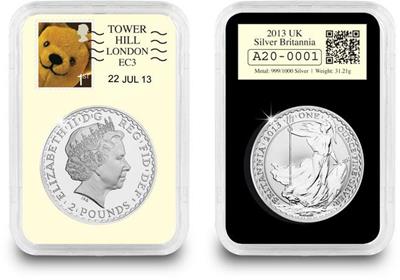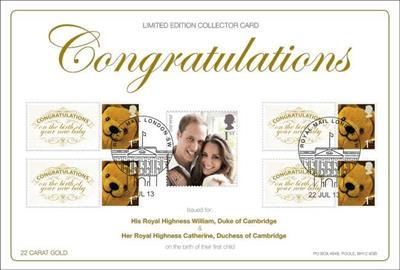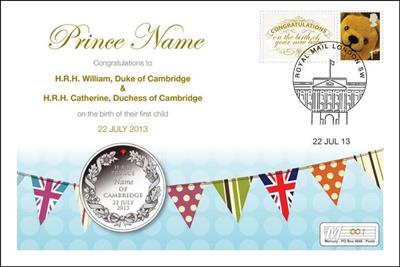Posts Tagged ‘Royal Mint’
How well do you know your coins?
Half of Britons don’t know their own coins –
well that’s what the Royal Mint says…
A recent survey commissioned by the Royal Mint suggests that the British population has very little idea about the coins they use every day.
It seems that 17% of people had no idea that Queen Elizabeth II was featured on the obverse (head side) of British coins, with a slightly concerning 4% suggesting it was Queen Victoria and 3% former Prime Minister Margaret Thatcher.
As for the designs on the coins 68% struggled with what was on the penny and perhaps most remarkably practically half of the adult population (48%) were unable to identify the correct number of denominations currently in circulation.
Growing interest in circulating coin collecting
In fact the Royal Mint’s research flies in the face of growing interest in the UK’s circulating coinage. Fuelled by the incredible interest in the Olympic 50 pence coins, that has seen 70% of the 15,000,000 coins that went into circulation disappear – apparently into individual collections – change collecting has gathered considerable momentum over the last couple of years.
In fact there are currently 93 different £2, £1 and 50p coin designs and with only the very latest releases still to make banks and post offices, nearly all are available to collect in your change.
But with so little knowledge about our own coinage, it’s little wonder that some many collectors have turned to www.changechecker.org to track their collection and swap coins with other collectors. With over 75 swap requests being posted each day, we can be hopeful that Britons are rapidly re-educating themselves about their coinage.
Kate Gives Birth to a Collecting Frenzy
Managing Director, Ian Glen, helps you pick through the Royal Baby commemorative jungle.
It’s 9.57 am. Less than 24 hours after the Duke and Duchess of Cambridge have been blessed with a new baby boy and a nation with its future King.
The Prince has not even been given a name yet but already there is a vast array of commemorative memorabilia.
One of our most important jobs is to select for you the very best commemorative issues that will mark the birth our future King in the most appropriate way and create a lasting heirloom that you can pass down to your children and grandchildren.
But which of the hundreds of commemorative pieces will stand the test of time?
Well let me share with you some of the elements that I believe are most important when we select the pieces we recommend to collectors.
1. Capture a moment in time

The Official Royal Mail Postmark captures the moment in time forever as with this DateStamp (TM) coin.
When there is a momentous occasion like a Royal Birth, I’m always keen to tie commemorative items back to that moment forever, which is why in my mind stamps create such a perfect collectable.
For example, we arranged well in advance for Royal Mail to hold a number of covers and other philatelic items ready for them to postmark with the all-important birth-date, as soon as it was announced.
These are true never-to-be repeated commemoratives, unlike so many items that will be manufactured for months after the birth.
2. History and heritage
.jpg)
The Gold-plated Commemorative features a timeless heraldic design and draws on hundreds of years of minting heritage.
By specialising in coins and stamps, we have already declared our hand that the best collectable items have a strong history and heritage. Coins, commemorative medals and stamps, of course, have long traditions as Royal Commemoratives and so make the perfect keepsake.
With much issuing information not yet in the public domain, you can also realistically expect British Isles issues, as well as coins and stamps from many key commonwealth countries to be announced over the coming days and weeks.
As always, the closer the links to the UK, typically the stronger the longterm heritage of the piece. And with a Christening some way off, I’m certain we have many important issues still to come.
3. Designed to stand the test of time
A commemorative piece should always be designed to create an enduring memory – something that you can pass down through the generations.
It is no coincidence that many of the most popular coins to be issued over the years feature heraldic representations. Rushed and imagined sketchy pictures of the Royal Couple and baby, bear little creative strength and over time risk looking tired and clichéd.
It’s also worth searching out something a little bit unusual – even unique – in the design, which is why I was delighted when we were able to select a silver commemorative design that actually contains the new Prince’s birthstone – a ruby – as an integral part of the design.
4. Edition limits that mean something

Just 2,000 22 Carat Gold Collector Cards have been issued. With an edition of just 2,000, they are tipped to be among the earliest sell outs.
Of course, many Royal Baby commemoratives will be issued in limited editions – but that is only of real importance if demand is actually going to exceed supply, resulting in collectors missing out.
Of course, there is no hard and fast rule but I like to ensure that we work hard to select commemoratives with edition limits that should see sell-outs, helping to ensure their long-term collectability.
Finally, there is just one other thing to add. Enjoy your collecting.
By owning a Royal Commemorative, you are ensuring that not only you, but also your children and grandchildren, will forever have an element of connection to the moment when a nation celebrated the birth of its future King.
 click here to view our full Royal Baby Commemorative Range
click here to view our full Royal Baby Commemorative Range
Portraits of a Queen – which portrait proved most popular?
A couple of weeks ago we asked you to vote for the Royal Portrait you liked the most.
If you were wondering what the results were, take a quick look at the “videographic” below…
You can own all four Portraits on original UK Crowns.
Click here for more info about the Portraits of the Queen 4-coin set



.jpg)
